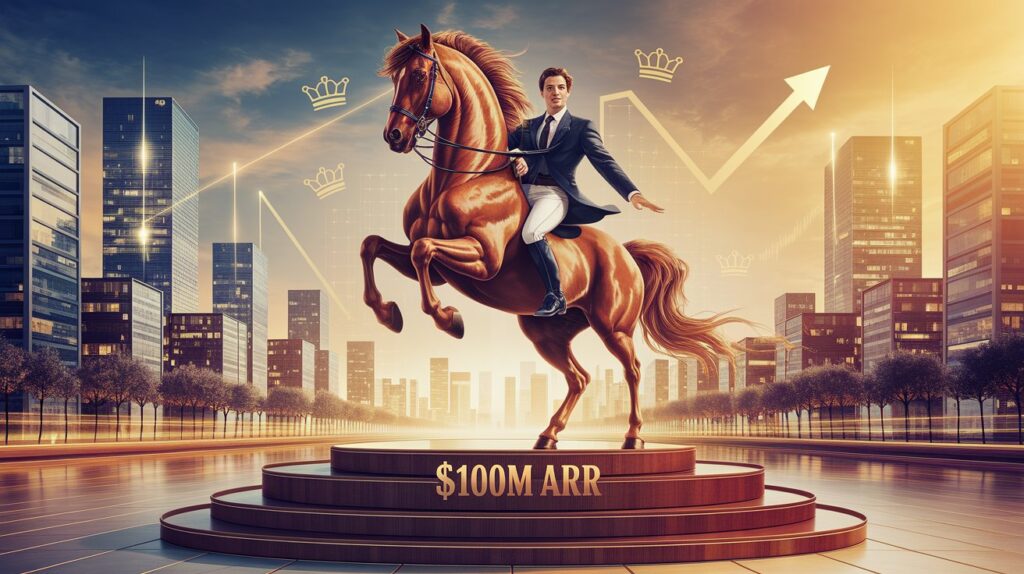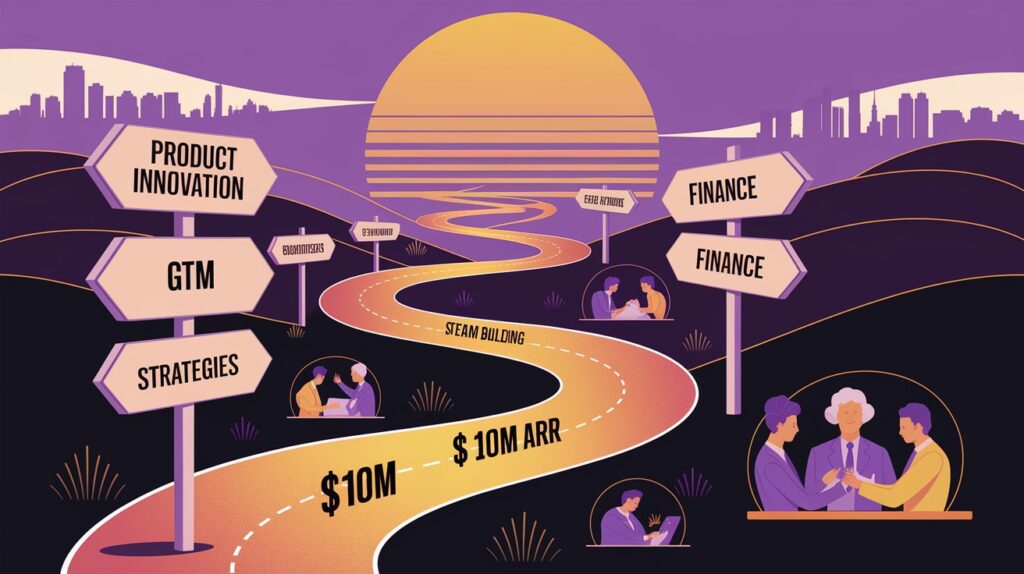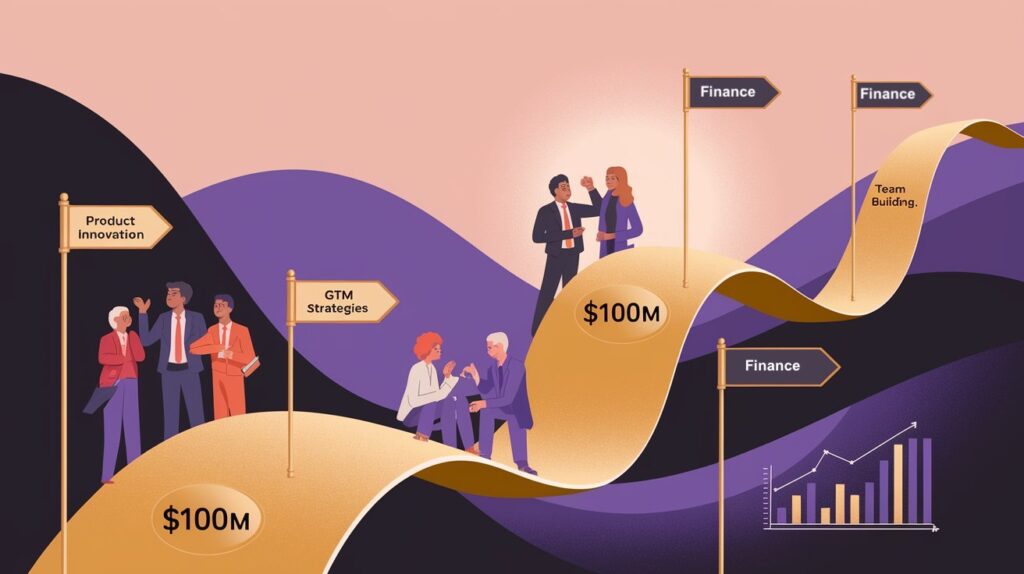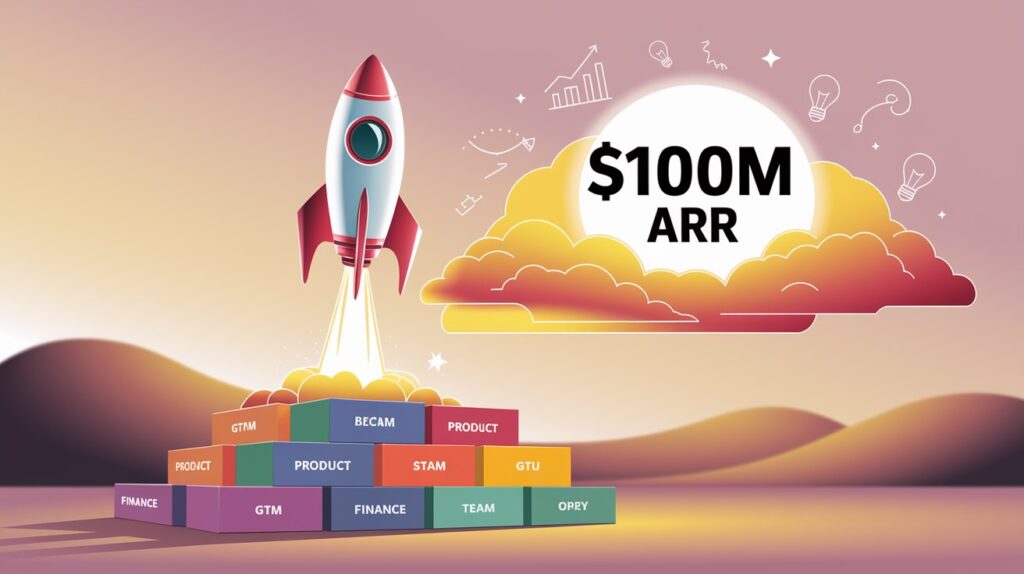- Home
- /
- Entrepreneurship
- /
- The Ultimate Guide to Scaling…
Introduction
In the fast-paced world of startups, reaching $100 million in Annual Recurring Revenue (ARR) is a monumental milestone, often referred to as achieving “Centaur” status. This coveted benchmark signifies a startup’s transition from a promising venture to a market leader capable of sustained growth and profitability. Bessemer Venture Partners, a titan in venture capital, has distilled decades of experience into a comprehensive roadmap outlined in their book, From Startup to Centaur: The Founder Roadmap to $100 Million ARR. This article synthesizes key insights from the book, offering actionable strategies, real-world case studies, and practical advice for founders aiming to scale their startups to Centaur status. Whether you’re a first-time founder or a seasoned entrepreneur, this guide will equip you with the tools to navigate the complex journey from $1 million to $100 million ARR.
Understanding the Centaur Milestone

The term “Centaur” was coined by Bessemer to describe startups that achieve $100 million in ARR, a milestone rooted in business fundamentals that reflects a company’s ability to command its market. Unlike the “unicorn” label, which focuses on valuation, the Centaur milestone emphasizes sustainable revenue growth and operational efficiency. The book highlights that reaching this milestone requires a blend of product innovation, go-to-market (GTM) strategy, financial discipline, and team-building prowess.
Why $100M ARR Matters
- Market Leadership: Companies that reach $100M ARR often command significant market share, with top players capturing 50% or more of their market’s enterprise value.
- Valuation Premiums: High-growth cloud companies with strong ARR growth rates command higher valuation multiples, making them attractive to investors.
- Sustainability: Achieving Centaur status indicates a business model capable of enduring economic fluctuations, as evidenced by companies like Shopify and Twilio.
Key Strategies for Scaling to $100M ARR
Building a Strong Foundation ($1M to $10M ARR)

The journey to $100M ARR begins with laying a robust foundation. Bessemer emphasizes four pillars for startups transitioning from $1M to $10M ARR: product, go-to-market, finance, and team.
Product: Finding and Expanding Product-Market Fit
- Trojan Horse Strategy: Identify a compelling feature that captivates your initial customer base, then expand functionality to unlock upsell opportunities. For example, Twilio used API calls as its initial wedge, later adding features like SMS and three-way conferencing to broaden its platform.
- Metrics to Track:
- Gross Retention: Measures customer retention without upsells (aim for 70-80% for SMB-focused companies).
- Net Retention: Includes expansion revenue (target 145%+ for top performers at $1-10M ARR).
- North Star Metric: Varies by company (e.g., signed envelopes for DocuSign, activations for Zapier).
Go-to-Market: From Founder-Led to Sales-Led
- Transition to Sales-Led: At $1M ARR, founders typically lead sales, but by $10M ARR, a scalable sales motion with a clear lead funnel and consistent quota attainment (80%+) is essential.
- Customer Success: Formalize a customer success function to drive renewals and expansions, reducing churn and enhancing customer lifetime value (CLTV).
- Key Metrics:
- ARR Growth: Target 230%+ for top-quartile companies.
- Gross Margin: Aim for 85%+ to ensure efficient delivery.
- CAC Payback: Strive for 12-24 months, depending on customer segment.
Finance: From Viable Product to Viable Company
- Runway Planning: Map financial runway to clear milestones, ensuring capital efficiency.
- Growth Endurance: Maintain 70-80% of the previous year’s growth rate to sustain momentum.
- Metrics:
- Efficiency Score: Target 1.5x for top performers at $10M ARR.
- Free Cash Flow (FCF) Margin: Expect -65% at $1-10M ARR, improving as scale increases.
Team: Building a Functional Expert Bench
- Hire Specialists: Complement the founding team with functional experts (e.g., sales expert by $1M ARR, product expert by $2M ARR).
- Cultural Stewardship: Actively manage culture to maintain alignment as the team grows.
Case Study: Teleport, a Bessemer-backed company, transitioned from founder-led sales to a scalable model by targeting commercialized open-source projects. This focus allowed them to refine their ideal customer profile (ICP) and achieve repeatable sales processes by $10M ARR.
Scaling to Centaur Status ($10M to $100M ARR)

Once a startup surpasses $10M ARR, the focus shifts to operational efficiency and market expansion. Bessemer’s insights highlight the importance of multi-product strategies, vertical expansion, and financial rigor.
Product Innovation: The Layer Cake Strategy
- Multi-Product Expansion: Top vertical software companies build a “layer cake” of products to drive continuous growth. For instance, Veeva expanded from CRM to content management in the life sciences vertical, significantly increasing its total addressable market (TAM).
- Integrated Services: Adding services like payment processing or VOIP can enhance revenue streams. Toast’s integration of payment solutions contributed significantly to its revenue growth, processing over $14B in gross payment volume quarterly.
Go-to-Market: Leveraging Incumbency Bias
- Expansion Focus: In challenging markets, existing customer expansion (upselling, cross-selling, increasing seats) is more reliable than new logo acquisition. EMCloud companies saw net dollar retention drop from 120% in Q2 2022 to 112% in Q2 2023, underscoring the importance of customer success.
- Pricing Optimization: Regularly test pricing models (e.g., volumetric or tiered pricing) to align with customer value. Adding self-service tiers can reduce adoption friction.
Finance: Balancing Growth and Profitability
- Rule of X: Bessemer introduces the Rule of X, an evolution of the Rule of 40, which weights growth more heavily than profitability (Rule of X = Growth Rate x 2.3 + FCF Margin for public companies). For example, a company with 30% growth and 15% FCF margin is valued higher than one with 15% growth and 30% FCF margin.
- Cash Conversion Score: Measures ARR per dollar of capital invested. Zapier’s $140M ARR on $1.3M raised exemplifies best-in-class efficiency.
Team: Scaling Culture
- Hire for the Future: Recruit talent with experience at companies 2-3 years ahead of your current stage.
- Cultural Reinforcement: Implement processes to maintain culture, such as regular employee onboarding sessions. SendGrid’s CEO spent 45 minutes with every new employee batch to reinforce cultural values.
Case Study: ServiceTitan expanded from residential plumbing to adjacent verticals like HVAC and pest control, leveraging M&A and new product development. By 2023, it served over 11,800 businesses and was poised for an IPO with over $350M in revenue.
Navigating Macroeconomic Challenges

The book emphasizes resilience in turbulent markets, drawing lessons from 2023’s economic challenges. Key tactics include:
- Customer Retention: Leverage incumbency bias to maintain existing customers, as they are less likely to switch vendors during downturns.
- Efficiency Over Growth: Shift from a “growth-at-all-costs” mindset to prioritizing profitability. Top Cloud 100 companies quickly adapted to focus on margin quality.
- Employee Focus: Maintain morale during restructuring by transparent communication and aligning compensation with efficiency goals.
Case Studies of Centaur Success

Calendly: Product-Led Growth
Calendly achieved $100M ARR with minimal venture capital by leveraging a freemium model. Its low-friction product attracted a wide user base, enabling efficient enterprise sales and market leadership in scheduling.
Cloudinary: Bootstrapping to Success
Cloudinary bootstrapped to $100M ARR by targeting developers with a freemium model, achieving high gross margins and fast CAC payback. Its focus on community-driven growth created a competitive moat.
Axonius: Rapid Cybersecurity Growth
Axonius reached $100M ARR in just 4.5 years by delivering an exceptional user experience (NPS of 83) and expanding into adjacent functions like IT and finance, positioning it as a system of record for asset management.
FAQs

Q: What is the difference between a unicorn and a Centaur?
A: A unicorn is a startup valued at $1B or more, while a Centaur is defined by achieving $100M in ARR, emphasizing sustainable revenue over valuation.
Q: How long does it take to reach $100M ARR?
A: Top-performing cloud companies take 7-10 years, with growth endurance of 70-80% year-over-year. For example, Axonius achieved this in 4.5 years, while ServiceTitan took longer but expanded through M&A.
Q: What is the Rule of X?
A: The Rule of X is a valuation metric that weights growth more heavily than profitability (Rule of X = Growth Rate x 2.3 + FCF Margin for public companies), offering a more accurate reflection of cloud company value.
Q: How can startups maintain culture during rapid growth?
A: Implement systemic processes like onboarding sessions, empower employees to call out cultural deviations, and hire specialists aligned with long-term goals.
Recommended Readings

- Bessemer’s 10 Laws of Cloud Computing – A foundational guide for understanding cloud business dynamics.
- Pricing Course by Bessemer Venture Partners – Insights on optimizing SaaS pricing strategies.
- Working Backwards by Colin Bryar and Bill Carr – Explores Amazon’s product ownership model, relevant for multi-product strategies.
- BVP Nasdaq Emerging Cloud Index – Tracks performance metrics of top cloud companies, offering benchmarks for growth and efficiency.
Conclusion

Scaling a startup to $100M ARR is a daunting yet achievable goal with the right strategies. Bessemer Venture Partners’ From Startup to Centaur provides a blueprint for founders, emphasizing product innovation, scalable GTM strategies, financial discipline, and cultural stewardship. By learning from case studies like ServiceTitan, Calendly, and Axonius, founders can navigate the complexities of growth, adapt to market challenges, and build enduring, category-defining companies. Whether you’re at $1M or $50M ARR, the insights in this guide offer a clear path to Centaur status and beyond. Forge ahead, and let these lessons guide your journey to market leadership.












Leave a Reply